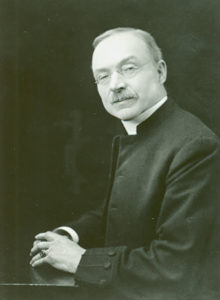Image: Du Vernet’s Diary Entry on Jeremiah Johnston (detail), 1898, Paper and ink. From Frederick H. Du Vernet, “Diary of a Missionary Tour,” Anglican Church of Canada General Synod Archives, M81-41.
RESTORYING COLONIAL AND MISSIONARY ARCHIVES:
RESEARCH AND HISTORICAL CONTEXT
Returning the Diary
Story Nations tells the story of diary written by an Anglican missionary on the banks of the Rainy River—or Manidoo Ziibi in Anishinaabemowin—in 1898. Stored for decades in the archives of the Anglican Church of Canada General Synod, the Story Nations team returned a copy of the diary to the Kay-Nah-Chi-Wah-Nung Historical Centre in 2012, and has been working in consultation with Kay-Nah-Chi-Wah-Nung to develop this digital storytelling site since then. Explore the diary via the episodes here.

Du Vernet’s Writings
Toronto-based Anglican missionary, Frederick Du Vernet (1860-1924), visited the Ojibwe living on Treaty 3 territory along the Rainy River in 1898. The diary he left behind paints a picture of life on the river, telling stories of Ojibwe women and men who actively resisted the missionaries and of those who showed interest in Christianity. The diary contains Du Vernet’s vivid and judgmental descriptions of Ojibwe ceremonies and Christian rituals, as well as his sense of thrill when running rapids on the river and encountering the land.
Making the Diary Digital
We have organized the diary into 20 episodes, or stories, which you can read and listen to online. Although we have occasionally modified the wording of the diary, each episode provides a readable and chronological transcription of what Du Vernet himself wrote. Clicking on the audio link lets you hear a reading of the diary. In the text, clicking on a word or phrase underlined in green 1 brings you to a short annotation and accompanying image to provide more context. In some cases, we also include longer articles that tell you more about people, places, and concepts referred to in the diary. You can learn more about the editorial process here.
Please note:
In his diary, Du Vernet is sometimes derogatory toward Anishinaabe and other Indigenous peoples, using words like “heathen.” We haven’t edited this language in order to remind readers of the force of colonial racism and Christian supremacy in Canadian approaches to Indigenous nations. We’ve written annotations about many words in the diary, including offensive ones, and we welcome feedback from readers.
Please be in touch with the Kiinawin Kawindomowin Story Nations Collective if you have any thoughts or suggestions for improvements or corrections to the site.
Additional Resources
Glossary, Index, and Articles
An overview of all the articles providing more extensive and detailed information on topics of interest can be found under ‘glossary and index’. To see the academic work that informed our larger project and/or provided the information for articles and annotations, check out the ‘further reading’ tab.
The Manuscript and Diplomatic Transcription
Those interested in the editing process, including explanations of the reading version, the diplomatic transcription, and the manuscript we worked with, can look here. Images of Du Vernet’s diary and a diplomatic transcription can be found here.
Digital Stories, Map Gallery, Student Essays, and the Historical Centre
There are many ways to learn more about the region Du Vernet traveled! Watch and listen to stories told by Ojibwe people today about the land and what it means to them. Check out the map gallery to see historical documentations of the land, read student essays to learn more about Treaty 3 Territory, and visit the Kay-Nah-Chi-Wah-Nung Historical Centre to see this unique and beautiful place yourself.